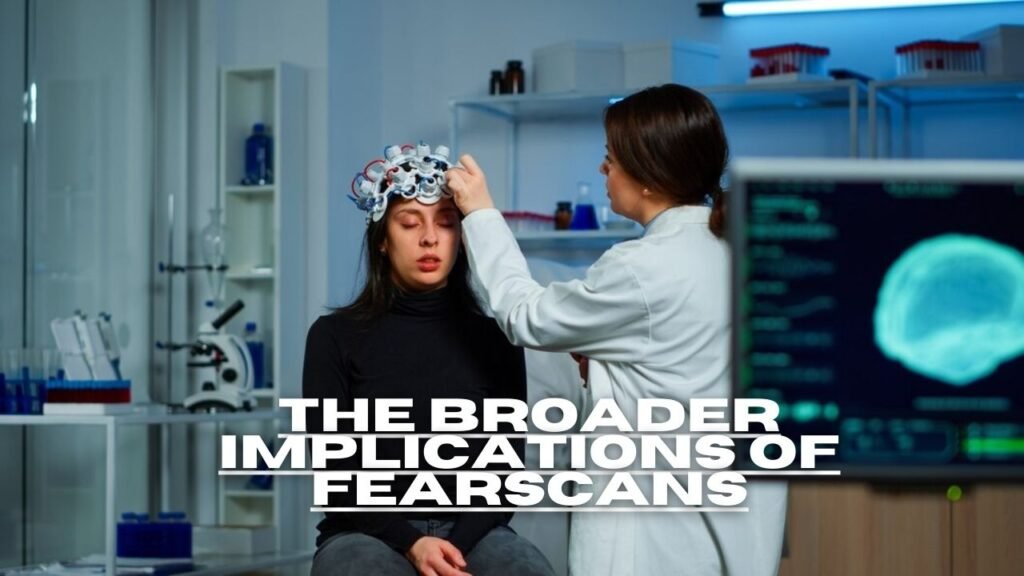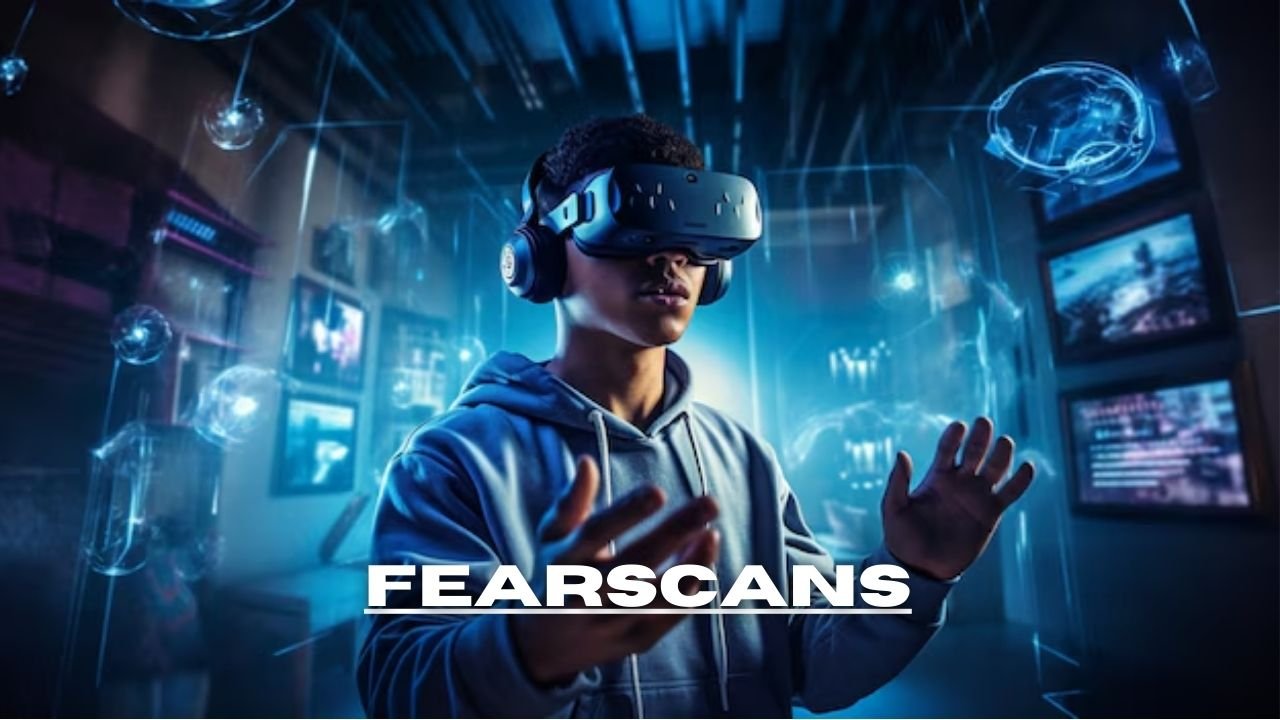Introduction for Fearscans
In the realm of psychology and technology, fearscans are gaining traction as innovative tools for understanding human emotions, particularly fear. As our lives become increasingly intertwined with digital technologies, fearscans offer unique insights into how fear manifests in our behaviors and decisions. This article delves deep into what fearscans are, their applications, how they work, and their significance in various fields. By the end, you will have a thorough understanding of fearscans and how they can be utilized in both clinical and non-clinical settings.
Table of Contents
The Growing Importance of Understanding Fear
Fear is an innate emotion that everyone experiences at some point in their lives. It can be triggered by a wide range of stimuli, from external threats to internal anxieties. Understanding fear is critical not just for individual mental health but also for various sectors, including education, marketing, and healthcare. The increasing prevalence of anxiety disorders and phobias in modern society further emphasizes the need for effective tools to understand and address fear.
As we navigate an increasingly complex world, fearscans can provide a scientifically grounded approach to dissecting this multifaceted emotion. With technological advancements, we now have more sophisticated ways to measure fear responses than ever before. This article will explore the various dimensions of fearscans, including their historical context, technological advancements, and potential future applications.
What Are Fearscans?
Fearscans refer to a range of technologies and methodologies designed to measure and analyze fear responses in individuals. This can include biometric sensors, psychological assessments, and machine learning algorithms that interpret data collected during fear-inducing scenarios. Fearscans can provide valuable insights into emotional states, helping researchers, clinicians, and even individuals understand their fears better.
Historical Context of Fear Measurement
Historically, fear has been measured through qualitative methods such as interviews and self-reports. While these methods provided some insights, they were often subject to biases and inaccuracies. The introduction of psychophysiological measures marked a turning point in fear research. Tools like polygraphs and galvanic skin response (GSR) devices began to provide more objective data, paving the way for the development of fearscans.
The Science Behind Fearscans

The study of fear is deeply rooted in psychology, neuroscience, and behavioral science. Fear is a complex emotional response that has evolved over millions of years as a survival mechanism. When faced with a perceived threat, the body undergoes various physiological changes, such as increased heart rate, perspiration, and changes in brain activity. Fearscans capitalize on these biological markers to provide a quantifiable measure of fear.
Using advanced technologies, fearscans can gather data from various sources, including:
- Heart Rate Variability (HRV): Changes in heart rate can indicate levels of fear and stress. HRV is a particularly valuable metric, as it reflects the body’s autonomic nervous system activity. High HRV typically indicates a relaxed state, while low HRV suggests heightened stress or fear.
- Galvanic Skin Response (GSR): This measures the electrical conductance of the skin, which varies with moisture levels due to sweating. Increased sweating is often associated with heightened emotional arousal, making GSR a reliable indicator of fear.
- Eye Tracking: Monitoring eye movements can reveal unconscious fear responses. For example, when faced with a fear-inducing stimulus, individuals may exhibit fixations on specific areas, indicating heightened attention and fear.
- Facial Recognition Software: This can analyze facial expressions to detect fear-related emotions. Algorithms can distinguish subtle changes in facial musculature that indicate fear, providing an objective measure of emotional response.
- Functional Magnetic Resonance Imaging (fMRI): fMRI scans measure brain activity by detecting changes in blood flow. By observing brain regions activated during fear responses, researchers can gain deeper insights into the neural underpinnings of fear.
The Role of Machine Learning in Fearscans
Machine learning algorithms are increasingly being integrated into fearscans to enhance data analysis. These algorithms can identify patterns in physiological data that may not be immediately apparent to human analysts. For example, a machine learning model could analyze a combination of HRV, GSR, and eye-tracking data to predict an individual’s fear response more accurately.
Applications of Fearscans
Fearscans have a wide range of applications across various fields, including:
- Clinical Psychology: Fearscans can be instrumental in diagnosing anxiety disorders, phobias, and PTSD. By understanding the specific triggers of fear in patients, therapists can tailor their treatment plans accordingly. For instance, exposure therapy can be adjusted based on real-time fear measurements gathered through fearscans.
- Market Research: Businesses can use fearscans to understand consumer reactions to advertisements or products. Knowing what evokes fear can help marketers create more effective campaigns. For instance, fearscans can reveal how viewers emotionally respond to a commercial that plays on common fears, such as financial insecurity.
- Education: Educators can use fearscans to assess students’ anxiety levels during tests or presentations, allowing for better support systems. By identifying students who may be overwhelmed by fear, educators can implement strategies to reduce anxiety and enhance performance.
- Gaming and Virtual Reality: The gaming industry is increasingly using fearscans to create more immersive and emotionally engaging experiences by gauging players’ fear responses in real-time. Developers can tailor game experiences based on players’ physiological reactions, providing a uniquely personalized experience.
- Public Safety: Law enforcement and security agencies can employ fearscans in crowd management situations. Understanding how fear manifests in large groups can help authorities prevent panic and ensure public safety during emergencies.
How Do Fearscans Work?
The process of conducting a fearscan typically involves several key steps:
- Setup: Participants are fitted with various sensors designed to measure physiological responses. These sensors are often connected to a computer or mobile device that records the data. A controlled environment is usually set up to minimize external distractions.
- Fear-Inducing Stimuli: Participants are exposed to specific stimuli designed to elicit fear. This could include visual images (e.g., spiders, heights), sounds (e.g., loud noises, screams), or even virtual reality scenarios (e.g., simulated heights). The choice of stimuli is critical, as it needs to be relevant to the individual’s fears for the fearscan to be effective.
- Data Collection: As participants react to the stimuli, data is collected in real time. This may include heart rate, GSR, eye movements, and facial expressions. In some cases, participants may also be asked to self-report their fear levels on a scale during and after the exposure.
- Data Analysis: The collected data is analyzed using advanced algorithms and machine learning techniques to determine the levels of fear experienced by participants. Statistical analyses can also be employed to identify correlations between different physiological measures and self-reported fear levels.
- Feedback and Interpretation: Participants receive feedback on their fear responses, which can be used for further understanding and treatment. This feedback can also include personalized coping strategies, making fearscans a valuable tool for self-improvement.
Advantages of Fearscans
- Objective Measurements: Unlike traditional self-reporting methods, fearscans provide objective, quantifiable data, reducing bias in the assessment of fear. This can lead to more accurate diagnoses and effective treatment plans.
- Real-Time Analysis: Fearscans allow for immediate analysis of fear responses, making it easier to understand emotional reactions as they occur. This can be particularly valuable in therapeutic settings, where immediate feedback can facilitate discussions.
- Personalized Insights: The data collected can lead to tailored interventions, whether in therapy, marketing, or education. This personalized approach enhances the effectiveness of strategies aimed at reducing fear and anxiety.
- Versatility: Fearscans can be applied in various fields, making them valuable tools for research and practical applications. Their adaptability allows professionals to address fear in multiple contexts, enhancing their overall effectiveness.
Limitations and Ethical Considerations
While fearscans offer promising advantages, there are limitations and ethical considerations to keep in mind:
- Individual Variability: People may respond differently to fear-inducing stimuli based on their personal experiences, cultural backgrounds, and psychological profiles. This variability can complicate data interpretation.
- Consent and Privacy: The collection of biometric data raises ethical questions regarding consent and privacy. Participants should be fully informed about how their data will be used and stored, ensuring that their rights are protected.
- Potential for Misuse: Fearscans could be misused in certain contexts, such as in marketing or surveillance. Ethical guidelines should be established to prevent the exploitation of fear for commercial gain or invasive practices.
- Dependence on Technology: As with any technological advancement, there is a risk of over-reliance on fearscans. While they provide valuable data, they should complement, not replace, traditional therapeutic approaches.
Emerging Technologies in Fearscans
As we look to the future, several emerging technologies promise to enhance the capabilities of fearscans even further:
- Wearable Technology: The rise of wearable devices such as smartwatches and fitness trackers has made it easier to collect biometric data continuously. These devices can monitor heart rate, skin conductance, and other physiological indicators in real time, providing ongoing insights into an individual’s fear responses in various contexts.
- Artificial Intelligence (AI): AI can significantly improve the interpretation of fearscan data. Machine learning algorithms can analyze large datasets to identify patterns and correlations that human analysts might miss. This can lead to more accurate predictions of fear responses and tailored interventions.
- Virtual Reality (VR) and Augmented Reality (AR): The integration of VR and AR with fearscans creates opportunities for immersive experiences that can effectively simulate fear-inducing situations. These technologies can be particularly useful in therapeutic settings, allowing patients to confront their fears in a controlled environment while their physiological responses are monitored.
- Neurofeedback: This technique involves training individuals to alter their brain activity through real-time feedback from brain imaging technologies. Combining neurofeedback with fearscans could lead to innovative approaches for managing fear and anxiety, empowering individuals to gain better control over their emotional states.
The Broader Implications of Fearscans

- Mental Health Awareness: The increasing use of fearscans in clinical settings can contribute to greater awareness and understanding of mental health issues. By providing objective data on fear responses, fearscans can help destigmatize mental health conditions and encourage individuals to seek help.
- Improved Therapeutic Approaches: As clinicians gain more insights into their patients’ fear responses, they can develop more effective treatment plans. For instance, understanding the specific triggers of fear can lead to more personalized approaches in cognitive-behavioral therapy, exposure therapy, and mindfulness practices.
- Corporate Responsibility: In the marketing sector, fearscans can lead to more ethical advertising practices. By understanding how fear influences consumer behavior, companies can develop campaigns that resonate with their audience while avoiding manipulative tactics that exploit fear.
- Educational Strategies: In educational settings, fearscans can guide the development of supportive environments for students. By identifying those who may be experiencing high levels of anxiety, educators can implement interventions to foster a more conducive learning atmosphere.
Case Studies: Fearscans in Action
- Clinical Applications: A mental health clinic in New York implemented fearscans as part of their treatment protocol for patients with generalized anxiety disorder. By monitoring physiological responses during therapy sessions, clinicians were able to adjust their approaches in real time, leading to a 30% improvement in treatment outcomes over six months.
- Marketing Research: A major advertising firm used fearscans to analyze consumer reactions to a campaign centered around financial security. The data revealed that while the campaign initially evoked fear, it also inspired a sense of empowerment among viewers. As a result, the firm refined its messaging to strike a balance between acknowledging fears and promoting positive solutions.
- Education: A school district in California integrated fearscans into its approach to standardized testing. By assessing students’ anxiety levels before and during tests, educators were able to identify students who needed additional support. This led to the implementation of mindfulness programs that reduced test anxiety by 40%.
The Future of Fearscans: What to Expect
As research in psychology and technology continues to advance, fearscans will likely evolve in several key ways:
- Greater Accessibility: As technology becomes more affordable and user-friendly, fearscans may become widely accessible to individuals seeking to understand their emotional responses better. Mobile applications that incorporate fearscan technologies could empower individuals to monitor their fear levels independently.
- Interdisciplinary Collaboration: The future of fearscans may see increased collaboration between psychologists, data scientists, and technologists. This interdisciplinary approach can foster innovation, leading to new methods of fear assessment and intervention.
- Personalized Mental Health Care: As fearscans become more integrated into mental health care, we may see a shift toward personalized treatment plans that are data-driven. Clinicians can tailor interventions based on individual fear responses, resulting in more effective and efficient care.
- Public Policy and Research Funding: The growing recognition of the importance of mental health may lead to increased funding for research on fearscans and their applications. Policymakers may recognize the potential for fearscans to inform mental health initiatives and allocate resources accordingly.
Conclusion
In summary, fearscans are revolutionizing our understanding of fear and its impact on human behavior. By combining advances in technology with insights from psychology, fearscans provide an objective, data-driven approach to measuring and analyzing fear responses. Their applications across clinical psychology, market research, education, and gaming demonstrate their versatility and effectiveness.
As we continue to explore the complex landscape of fear, fearscans will play a crucial role in shaping our understanding of emotional well-being. With ongoing advancements in technology and an increased focus on mental health awareness, the future of fearscans holds great promise. Whether in therapeutic settings, marketing campaigns, or educational institutions, fearscans can offer valuable insights that empower individuals to confront their fears and improve their emotional health.
As the dialogue surrounding mental health evolves, fearscans will undoubtedly be at the forefront, providing the tools necessary for individuals and professionals to navigate the complexities of fear in today’s world.
FAQs About Fearscans
What is the purpose of a fearscan?
The primary purpose of a fearscan is to objectively measure and analyze fear responses in individuals. This can help in diagnosing psychological conditions, improving marketing strategies, and enhancing user experiences in gaming and virtual environments.
Are fearscans safe?
Yes, fearscans are generally safe. They involve non-invasive technologies that measure physiological responses without causing harm. However, the specific stimuli used during fearscans should be ethically chosen to avoid causing undue distress to participants.
How accurate are fearscans?
Fearscans can provide highly accurate measurements of fear responses. However, accuracy can vary depending on the technology used, the type of stimuli, and individual differences among participants.
Can fearscans be used for therapy?
Absolutely! Fearscans can help therapists better understand their patients’ fear triggers, allowing for more effective treatment plans tailored to individual needs. The insights gained from fearscans can also foster a deeper therapeutic alliance between therapists and clients.
What technologies are used in fearscans?
Fearscans utilize a variety of technologies, including biometric sensors (for heart rate and GSR), eye-tracking devices, facial recognition software, and fMRI. These tools work together to gather comprehensive data on fear responses.
Who can benefit from fearscans?
Various professionals can benefit from fearscans, including psychologists, marketers, educators, and game developers. Additionally, individuals seeking to understand their fears better can also find value in fearscan insights.
Are fearscans effective in reducing fear?
While fearscans themselves do not directly reduce fear, the insights gained from them can lead to more effective therapeutic interventions, ultimately helping individuals manage and reduce their fear responses over time.
Can fearscans identify specific phobias?
Yes, fearscans can help identify specific phobias by measuring physiological responses to fear-inducing stimuli related to those phobias. This information can be invaluable for developing targeted treatment plans.
What is the future of fearscans?
The future of fearscans looks promising, with ongoing advancements in technology and research. As machine learning and artificial intelligence continue to evolve, fearscans may become even more accurate and widely adopted across various fields, from mental health to marketing and beyond.
You can see latest news and updates at: Touchcric




